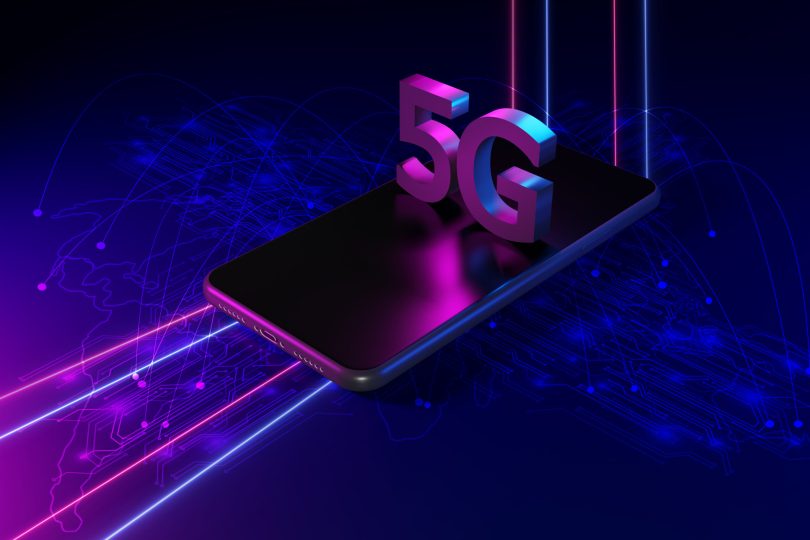5G technology is poised to revolutionize the way we connect, work, and live. With faster speeds, lower latency, and more reliable connections, 5G will unlock new possibilities across industries, from healthcare to entertainment. In this article, we explore how 5G works, its key benefits, and the transformative potential it holds for the future.
What is 5G?
5G, or fifth-generation wireless technology, is the latest evolution of mobile networks, offering speeds up to 100 times faster than 4G. It operates on a wider range of frequencies, including millimeter waves, which allows for faster data transfer and lower latency. This makes 5G ideal for supporting the growing number of connected devices and enabling real-time communication in new applications.
Unlike previous generations, 5G networks are designed to provide reliable connectivity even in crowded areas, supporting everything from smart cities to self-driving cars.
For a deeper dive into 5G technology, visit Qualcomm’s 5G Overview.
Key Benefits of 5G Technology
1. Faster Speeds
One of the most significant advantages of 5G is its ability to deliver ultra-fast speeds. 5G networks can reach download speeds of up to 10Gbps, compared to 4G’s maximum speed of 1Gbps. This speed boost will enable users to download large files, stream 4K video, and play online games without lag or buffering.
For example, the transition to 5G will significantly enhance gaming experiences, allowing for ultra-responsive gameplay with virtually no delay.
You can learn more about the potential speed of 5G in gaming in this TechRadar article.
2. Lower Latency
Latency refers to the delay before a transfer of data begins following an instruction. With 5G, latency is reduced to as low as 1 millisecond, compared to 30-50 milliseconds on 4G. This will revolutionize industries requiring real-time interactions, such as telemedicine, remote surgery, and augmented reality (AR) experiences.
Self-driving cars, for instance, will rely on 5G’s low latency to communicate with each other and the road infrastructure in real time, ensuring safer and smoother transportation. Find out more in this Forbes article on 5G for self-driving cars.
3. Supporting the IoT
The Internet of Things (IoT) is expected to expand dramatically with 5G, as more devices will be able to connect to the internet simultaneously. 5G’s high bandwidth and low latency are key to supporting the IoT, which includes smart homes, wearable devices, and connected appliances.
By connecting billions of devices seamlessly, 5G will create smarter cities, improve efficiency in industrial automation, and even optimize energy usage across industries. Check out this article from Network World for more insights on 5G and IoT.
Applications of 5G Technology
1. Healthcare and Telemedicine
5G will transform healthcare by enabling remote patient monitoring, telemedicine, and even robotic surgeries. With low latency and high data transfer rates, doctors can perform surgeries remotely, and patients can receive immediate care regardless of location.
5G will also support the growing demand for telemedicine, making healthcare more accessible, especially in rural or underserved areas. You can read more about how 5G will impact healthcare in this Mckinsey article.
2. Smart Cities and Autonomous Vehicles
5G’s ability to handle massive amounts of data from IoT devices will lead to the development of smart cities. In these cities, everything from traffic lights to waste management will be connected, making cities more efficient, sustainable, and safe.
Autonomous vehicles will also benefit from 5G by enabling real-time communication between vehicles, traffic signals, and other infrastructure to navigate roads safely and efficiently. Read more about how 5G is transforming transportation in this Bloomberg article.
3. Virtual and Augmented Reality
5G will provide the necessary bandwidth and speed to bring virtual reality (VR) and augmented reality (AR) to new heights. These technologies will benefit industries such as entertainment, education, and retail by providing immersive experiences with ultra-low latency.
For instance, 5G will enable real-time AR for applications like remote collaboration, gaming, and training. Discover more in this article on AR/VR advancements with 5G from TechCrunch.
Challenges and Considerations
While the promise of 5G is immense, there are still some challenges to overcome. The rollout of 5G infrastructure requires significant investment in new cell towers and fiber-optic cables, and there are concerns about the environmental impact of these installations. Additionally, there are ongoing debates regarding the potential health effects of exposure to higher-frequency electromagnetic radiation used in 5G networks.
Governments and telecommunications companies are working together to address these issues, ensuring that 5G networks are rolled out responsibly and safely. Learn more about the challenges of 5G in this BBC article on 5G rollout.
















